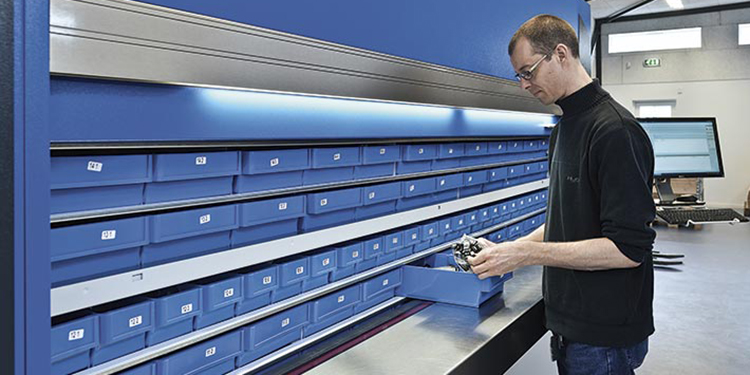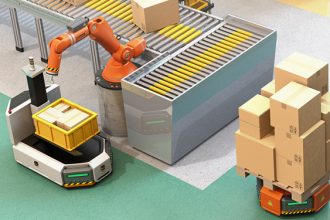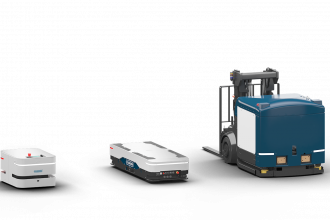Store More Inventory In A Smaller Footprint With ASRS Technologies

As a tidal wave of consumers have been busily filling their electronic shopping carts over the past several months, manual distribution and fulfillment operations have struggled to keep up with the demand. In addition to the sheer uptick in order volumes associated with the pandemic, consumers have grown accustomed to a virtually unlimited range of choices among available products as they shop online. To remain competitive, retailers have therefore had to stock a greatly expanded number of stock keeping units (SKUs) — but, where to put them?
Available warehouse space remains at a premium, with Jones Lang LaSalle (JLL) Research recently reporting that e-commerce had leased 71.3 million square feet by the third quarter of 2020 with annual absorption predicted to close at 200 million square feet. Nor is it cheap or quick to build additional square footage, either in a greenfield site or as an expansion on a current building.
Faced with these challenges, more operations are increasingly considering automated storage and retrieval systems (ASRS), including vertical lift modules (VLMs), vertical and horizontal carousels, shuttles, cube-based storage, mini-load and unit-load systems. When it comes to managing SKU proliferation specifically, ASRS technologies offer a distinct advantage over traditional, fixed pallet rack and storage shelves: storage density. Because they can be built anywhere from 20 to 100 feet tall, an ASRS can extend to meet the height of a building’s roof, allowing vertical overhead space that was previously wasted to be used to store more inventory, and more SKUs.
Not only do they save up to 85% of floorspace and maximize cubic volume, ASRS technologies enable an operation to greatly expand its offerings without needing to lease additional space or build a new facility. Further, they are flexible and scalable, allowing an operation to increase the system’s capacity by adding on to the structure to enable more product to be stored within it. For operations that require higher throughput, additional picking workstations can be integrated into the system to accommodate higher volumes of orders. Alternately, more retrieval units — whether those be shuttles, cranes, robots, or other inserter/extractor devices — can often be inducted or added on to an existing structure to increase throughput rates.
E-commerce and omni-channel warehouses and distribution centers aren’t the only operations taking note of the cubic storage advantages of ASRS solutions. So too are retailers with consumer-facing physical storefronts.
With the increase in buy-online-pick-up-in-store (BOPIS) by nearly 500% since the start of the COVID-19 pandemic, retailers offering “click-and-collect” shopping options for customers have begun to redefine what a traditional fulfillment center looks like. Micro-fulfillment solutions based on ASRS technologies are increasingly being implemented in the limited square footage backrooms of existing brick-and-mortar grocery and big box stores. This allows retailers to fill store orders for high-demand products without sending as many workers with picking carts into the aisles (where they might interfere with traditional shoppers’ experience), to buffer partial orders for consolidation, or to store completed orders prior to customer pickup — or all three.
Want to learn more about how ASRS solutions can address your facility’s inventory storage challenges? Contact the members of the Automated Storage and Retrieval Systems Industry Group of MHI.



